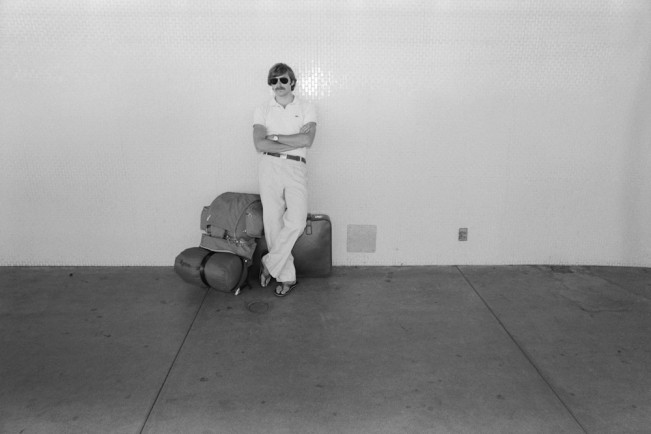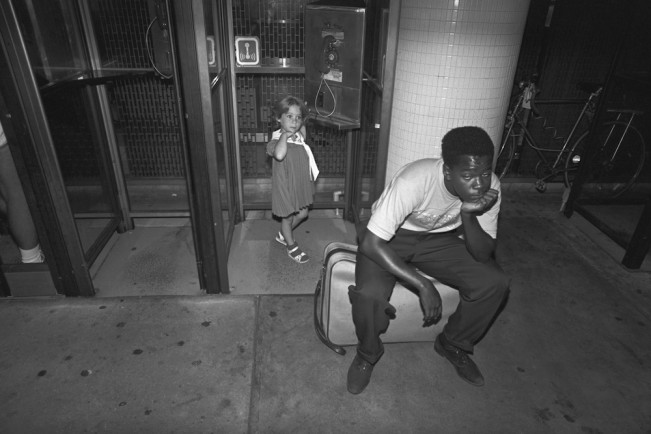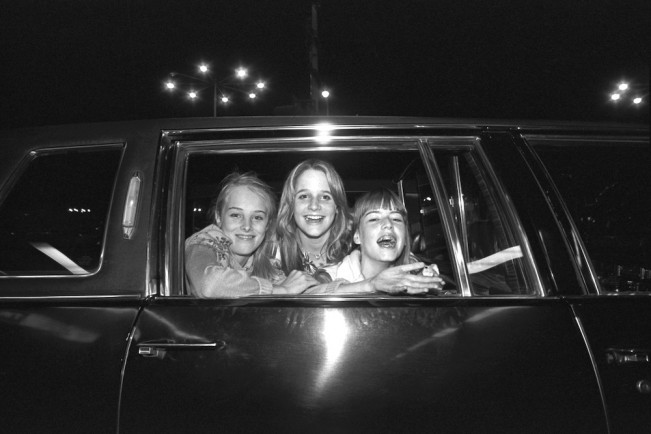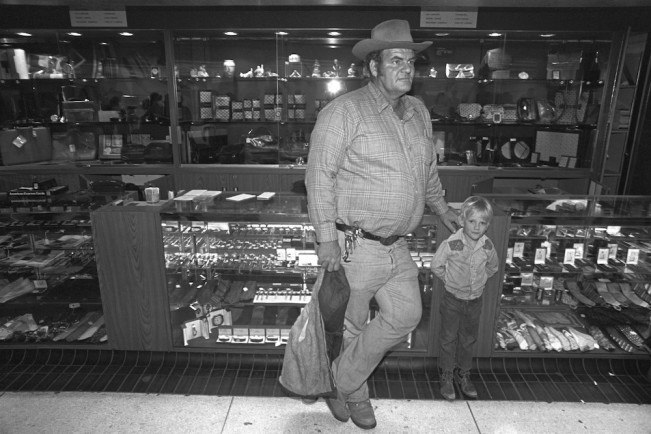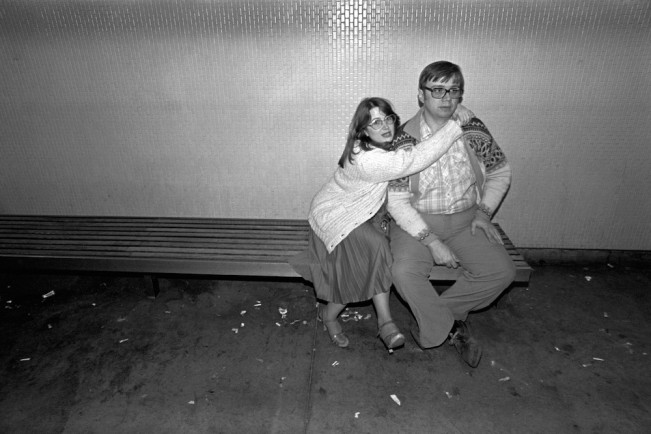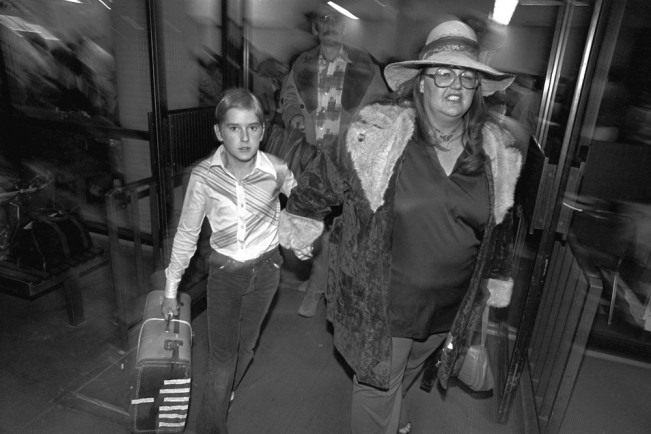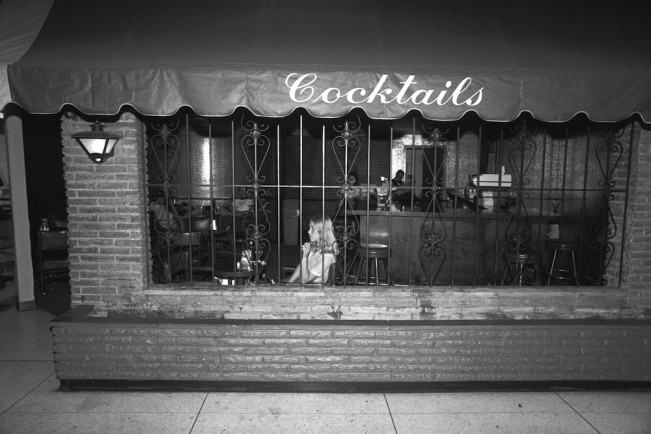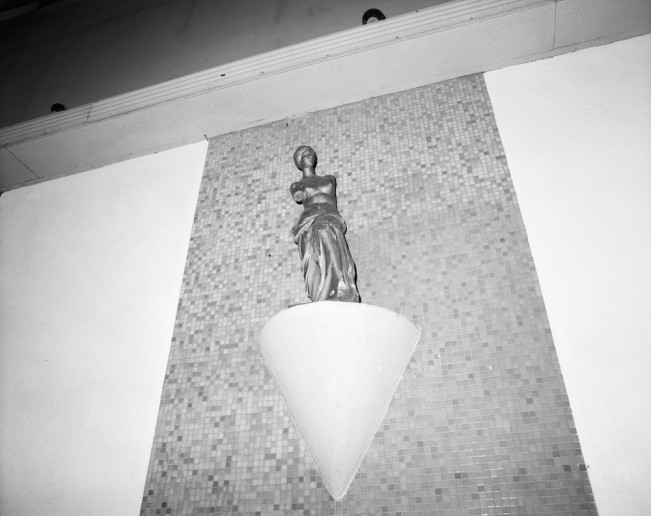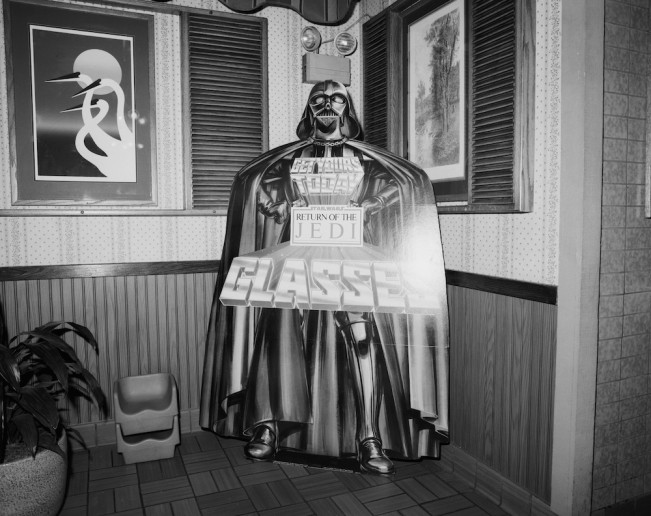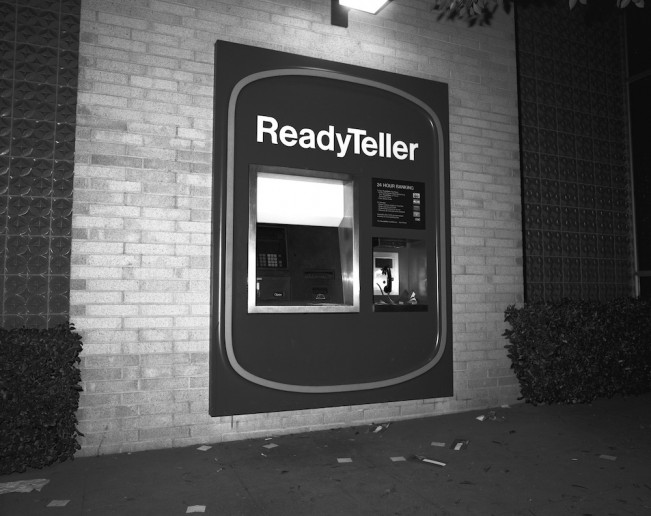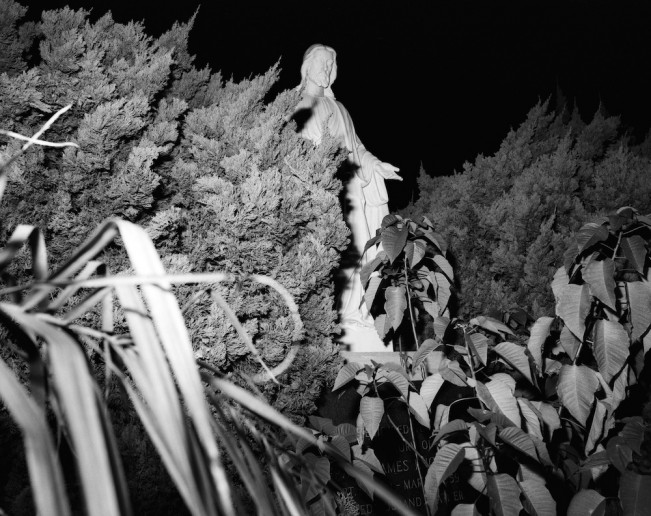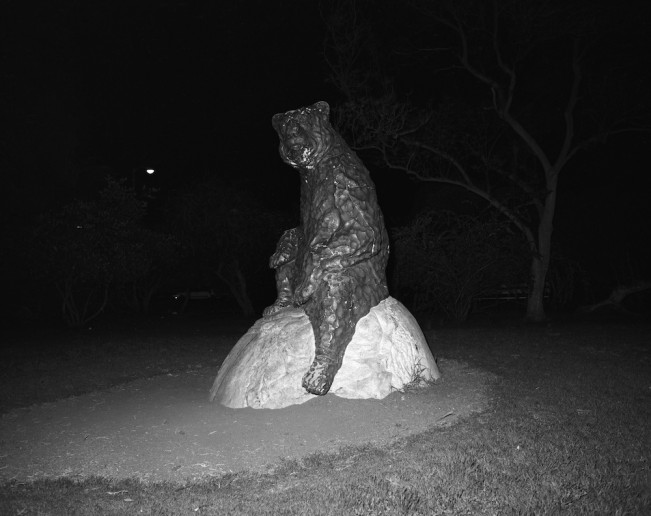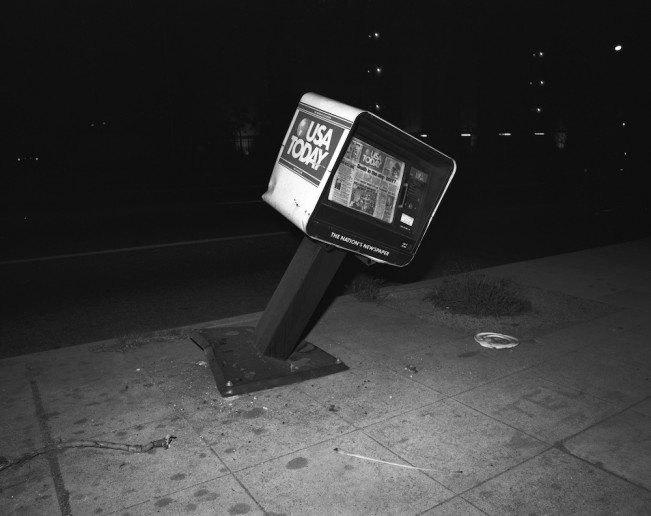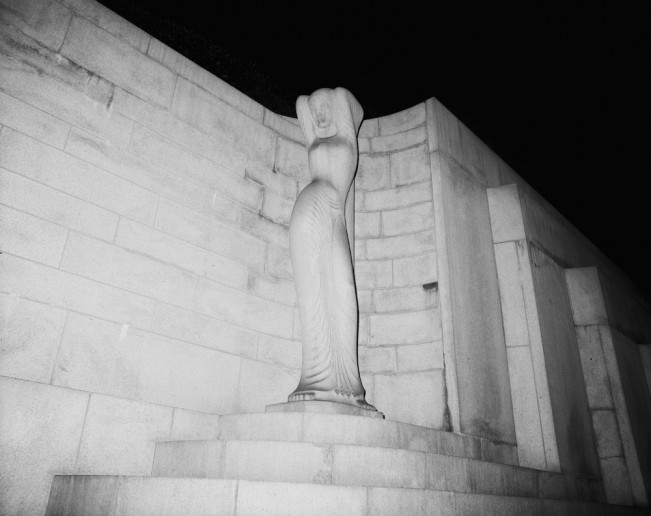John Brian King: LAX: Photographs of Los Angeles 1980-84
I seem to be at LAX (the Los Angeles Airport) at least once a week and have gotten to know it in a more significant way over the years. It’s an ever-changing city of sorts with a cast of low energy guardians moving tired and distracted travelers through its rainbow mosaic tunnels. Photographer, artist, and filmmaker John Brian King has captured that same terrain with his project, LAX, and reminds us what airport life was like when using a camera was not considered a potential act of terrorism. Spurl Editions has just released a monograph of LAX with an accompanying project, LA–an examination of Los Angeles at night devoid of people. The book, LAX: Photographs of Los Angeles 1980-1984, celebrates his flash and run perspective as he creates the perfect descriptor of Los Angeles on the fringes, away from the klieg lights and red carpets, when life was about drinking and driving and celebrating the absurdity of a city that looks better after the sun goes down.
John Brian King is a Los Angeles native who graduated with a degree in photography from the California Institute of the Arts. He designed the film titles for over thirty films, including Boogie Nights, Punch-Drunk Love and The Ring. Most recently, he wrote and directed the feature film Redlands, an examination of creativity and horror in relation to photography.
Statement by John Brian King:
I was born and raised in Los Angeles, near the airport, in a neighborhood called Westchester; it was blank and empty, a physical landscape of concrete and an aural landscape of jetliner noise. Aeronautics was omnipresent in my childhood: I lived on a street called Flight, I went to Orville Wright Junior High School, and my father worked as an engineer on the B-52 bomber and the Space Shuttle. My visits to the airport were limited to dropping off and picking up my parents’ friends and relatives – we lived close, after all, and they could park at our house for free.
I left Westchester at the age of seventeen, but I often returned to shoot photographs of people at the airport (the “LAX” section of this book). I rode a motorcycle (I had a couple of secret spots to park my bike) and mostly shot at night before going to late-night punk shows in Chinatown, Hollywood or the South Bay. I consciously went for an assaultive form of photography – flash, wide-angle lens, hit and run, no permission asked.
I went to art school thirty miles north of Los Angeles. My favorite teachers were photographers Jo Ann Callis, Judy Fiskin and John Divola; conceptual artists John Baldessari, Michael Asher and Douglas Huebler; and poet-translator Richard Howard. It was a fortunate time in my life.
After finishing school I lived in the Fairfax District of Los Angeles and worked at Carnation Milk. I bought a beautiful piece of machinery, the brutalist Pentax 6×7 camera, and took photos of Los Angeles at night (the “LA” section of this book). Avoiding people, I imagined myself as an archaeologist who had landed amid the bizarre debris of a dying culture. (I was also influenced by one of my favorite childhood movies, The Omega Man, with its images of an empty apocalyptic Los Angeles.)
Then the negatives sat in a box for thirty years. I gave up photography and did other things: writing, design, filmmaking.
But recently I made a feature film called Redlands, which was about the relationship between a young female model and an older male photographer, and even though the film was (among other things) a critical look at the genre of “glamour photography,” I realized I missed taking pictures.
So I have picked up the camera again. I am now shooting digitally and in color, but my aesthetic, as evidenced by the photographs in this book, remains the same.
Posts on Lenscratch may not be reproduced without the permission of the Lenscratch staff and the photographer.
Recommended
-
Paccarik Orue: El MuquiDecember 9th, 2025
-
Lauri Gaffin: Moving Still: A Cinematic Life Frame-by-FrameDecember 4th, 2025
-
Dani Tranchesi: Ordinary MiraclesNovember 30th, 2025
-
Art of Documentary Photography: Elliot RossOctober 30th, 2025
-
The Art of Documentary Photography: Carol GuzyOctober 29th, 2025

